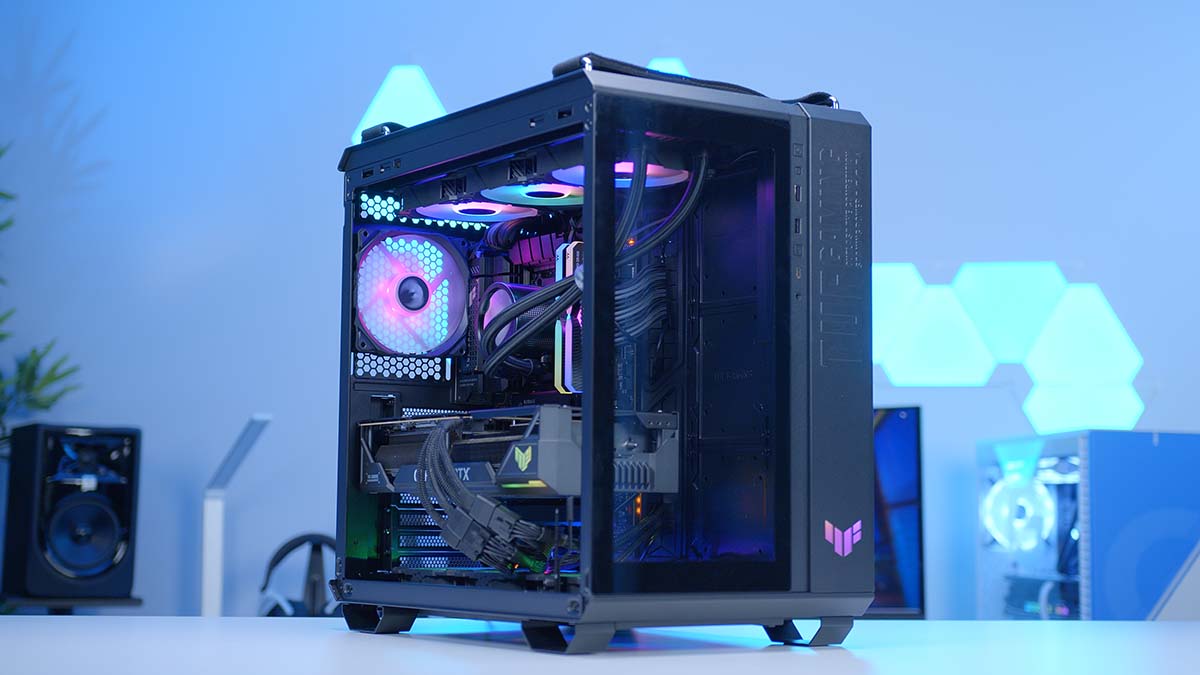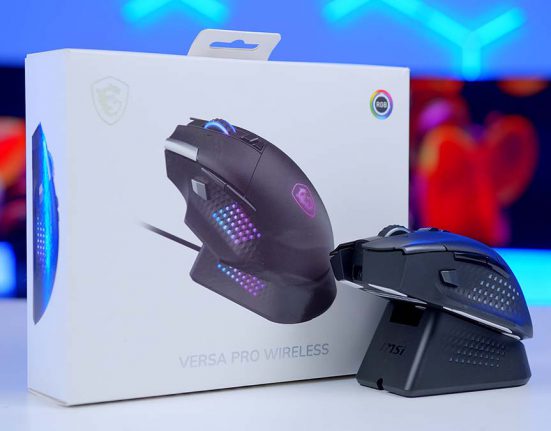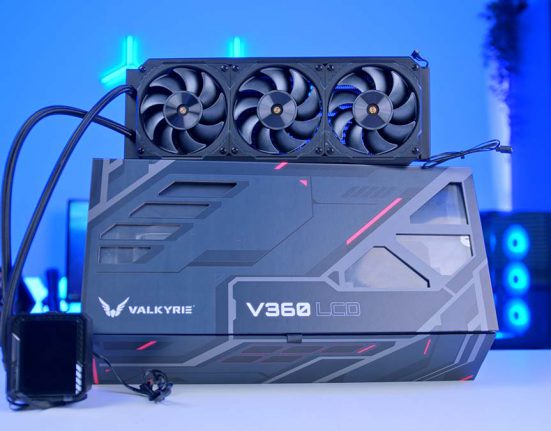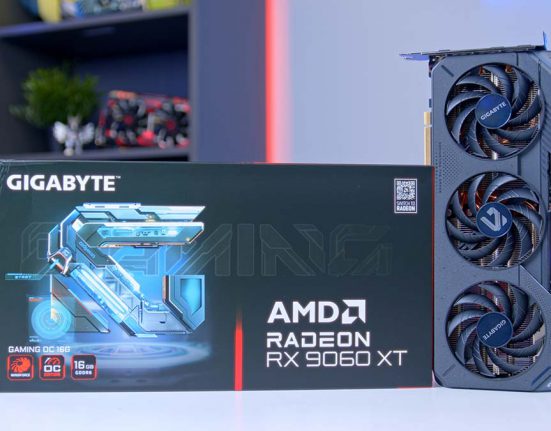Article produced in paid partnership with ASUS.
Artificial Intelligence has seen a significant surge in the market within the past couple of years, with several major manufacturers shipping AI-based technology with their products as standard. With the rise of tools such as ChatGPT, DLSS, and Frame Generation at the forefront of the AI market, it is no wonder that the PC gaming space has seen a number of both performance and visual improvements as a result of AI innovation.
But what kind of hardware do you need to run these AI technologies, and how is Artificial Intelligence likely to affect the technology industry in the future? In this article, we’ll delve into everything AI, discussing what AI is, the kind of PC you need to run AI tech and coverage of the tools and software available to assist with PC gaming and content creation workloads.
What is AI?
AI, otherwise known as Artificial Intelligence, is a technology that enables a computer to learn and simulate the human capacity for problem-solving. Creating an AI isn’t as simple as firing up Python or C++ and putting these programming languages to work. Developing AI requires massive amounts of data and time so that a computer can learn and then provide responses or exchanges based on what it has learned.
For example, DALL.E mini, an AI image generator, was trained on 250 million pairs of images and text to reach its current state. Assuming the average 1080p JPEG file is around 200 kilobytes, we’d need around 50 terabytes of storage space to train an AI image generator like DALL.E Mini. For context, 50 terabytes is 50,000 gigabytes of data, much more than the average PC build can handle.
The time element of training an AI is often the longest part of the process. Using algorithms (a complicated set of computing rules to solve a problem), we can teach a computing device how to complete a specific task to reach a desired outcome. However, this takes considerable time because the AI has to figure out how to achieve this result. It is effectively like teaching a child how to walk. They know how to walk because they’ve seen other people do it, but getting the body to move correctly is the hard part.
Because Artificial Intelligence is so versatile, in the sense that it can be trained to do anything effectively, developers worldwide are constantly releasing new tools that cater to a range of use cases. Whether you’re looking to maximise framerates across your favourite games or alter an image, AI can help.
Hardware Requirements
As discussed, AI development workloads can be intensive and often require hardware geared towards the prosumer market. However, for those looking to use readily available tools, the hardware prerequisites are more accessible for the average gamer or PC builder. We’ve noted the recommended hardware for gaming and content creation with AI at varying intensities.
| Workload | Recommended CPU | Recommended GPU | Recommended RAM | Recommended Storage | Recommended PSU |
|---|---|---|---|---|---|
| 1080p Gaming | Intel Core i5-14400F | ASUS Dual RTX 4060 Ti OC | 16GB DDR4 or Better | Gen3 or Better | ASUS TUF Gaming 650B |
| 1440p Gaming | Intel Core i5-14600K | ASUS Dual OC RTX 4070 SUPER | 16GB DDR5 or Better | Gen4 or Better | ASUS ROG Strix 750W Gold Aura Edition |
| 4K Gaming | Intel Core i5-14700K | ASUS TUF Gaming RTX 4080 SUPER | 32GB DDR5 or Better | Gen4 or Better | ASUS ROG LOKI SFX-L 850W Platinum |
| Photo Editing | Intel Core i5-14600K | ASUS Dual RTX 4060 Ti OC | 16GB DDR5 or Better | Gen4 or Better | ASUS ROG Strix 750W Gold |
| Video Editing | Intel Core i7-14700K | ASUS TUF Gaming RTX 4070 Ti SUPER | 64GB DDR5 or Better | Gen4 or Better | ASUS TUF Gaming 850W Gold |
Content Creation Requirements
Content creation requirements differ significantly from gaming workloads because most AI tools are implemented in the software you’re using. For this reason, specific hardware isn’t required to use these tools. However, to ensure minimal bottlenecking, we’ve stuck to CPUs with higher core counts, more RAM, and better storage for our recommendations.
It is worth noting that manufacturers provide components geared explicitly towards content creation, such as the ASUS ProArt range of graphics cards. These parts provide inherent advantages over traditional gaming components, such as more high-speed IO, stronger overclocking support, or better thermals to ensure temperatures stay low during the most intense workloads.
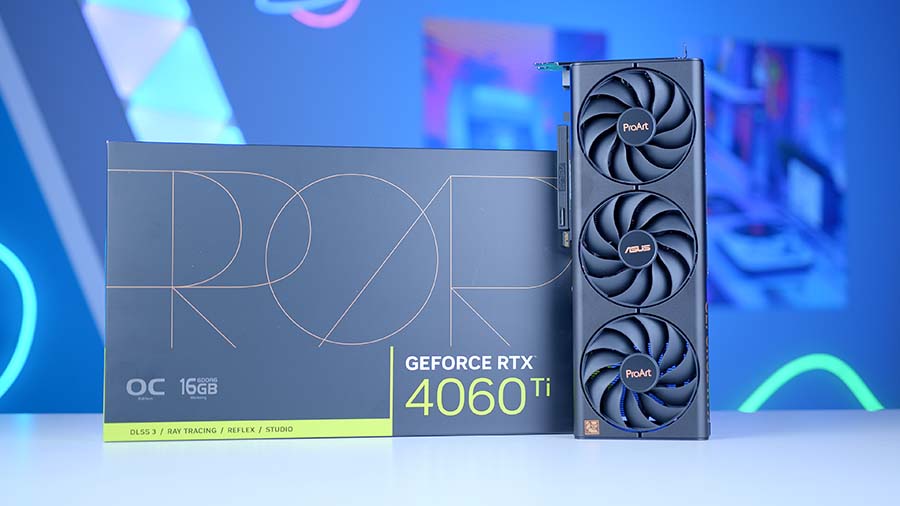
Content creation workloads are generally more intensive than gaming, so the hardware in a PC build needs to be pretty strong across the board to cope with the more strenuous demands. For our graphics card recommendations, we’ve chosen the ASUS Dual RTX 4060 Ti OC for photo editing and the ASUS TUF Gaming RTX 4070 Ti SUPER for video editing. These serve as a solid baseline for those editing 4K photos or videos, but mileage will vary depending on the complexity of each workload.
Gaming Requirements
The only major prerequisite for using AI tools in gaming is an NVIDIA RTX 2000 graphics card or higher, as these cards come with Tensor cores, which power NVIDIA’s Deep Learning Super Sampling (DLSS). RTX 4000 series GPUs can further leverage AI through the use of NVIDIA’s Frame Generation, technology that arrived as part of DLSS 3.0.
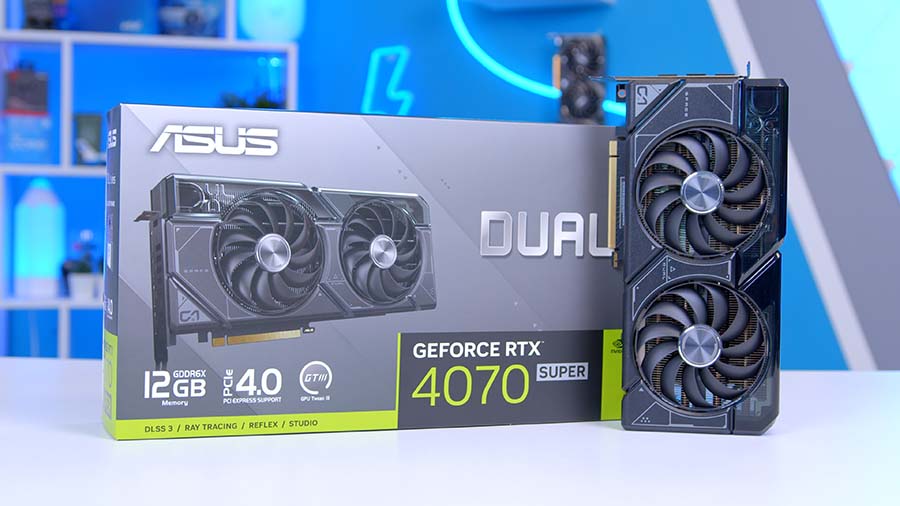
For this reason, we recommend an RTX 4000 graphics card to ensure you can make the most of the available AI tools. It is also worth noting that AMD doesn’t offer any AI-based gaming tools, so NVIDIA graphics cards are the best choice at the time of writing.
We’ve stuck to modern components that match the workload for the rest of our gaming hardware recommendations. For example, 1080p gaming doesn’t require much horsepower, so an Intel Core i5-14400F and ASUS Dual RTX 4060 Ti OC are more than ample to enjoy smooth framerates. On the other hand, 4K gaming needs more juice from your graphics card, so a GPU like the ASUS TUF Gaming RTX 4080 SUPER pairs nicely with an Intel Core i7-14700K at this resolution.
AI in Gaming
Artificial Intelligence tools have significantly excelled in gaming since NVIDIA introduced its DLSS technology with RTX 2000. DLSS allows gamers to enjoy higher framerates in their favourite games with the click of a button using AI. This has only been furthered with the introduction of Frame Generation on RTX 4000 graphics cards.
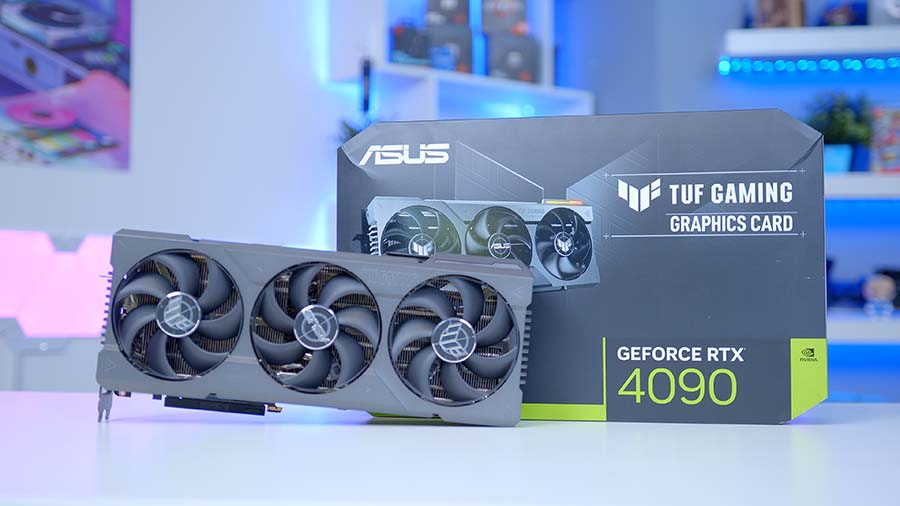
To briefly explain DLSS, NVIDIA has trained an Artificial Intelligence to redraw pixels at a higher resolution than your monitor and graphics card are outputting. This means that any game that uses DLSS will look perceivably better while maintaining a lower overhead because your game is running at a decreased resolution compared to the redrawn pixels.
With DLSS in its third iteration, framerate gains and image quality have only improved, making this technology a compelling selling point for RTX 4000 graphics cards. NVIDIA has taken performance a step further with Frame Generation by training its AI to redraw entire frames rather than just pixels. By analysing previous frames, NVIDIA’s AI can calculate and predict what the next frame should look like and then seamlessly insert the frame into the gameplay, resulting in smoother visuals.
DLSS Performance
We’ve provided testing data from our Alan Wake 2 benchmarks at 1440p to showcase DLSS’s performance. In this benchmark, all of our graphics cards have been tested with ray tracing and DLSS 3.0 off, and then a second run was conducted with ray tracing and DLSS 3.0 on. Across our results, the mean average framerate gain is 30.83FPS, which is a noticeable improvement even with cards like the RTX 4070 Ti SUPER and RTX 4080 SUPER, which offer excellent performance without DLSS.
While some lower-end cards, such as the RTX 4070 and RTX 4070 SUPER, didn’t see strong performance uplifts, the 20-25FPS boost increases gameplay smoothness, which is worth it for those gaming on weaker hardware. Overall, there is clear merit to using DLSS, as this AI technology offers substantial framerate increases across supported games.
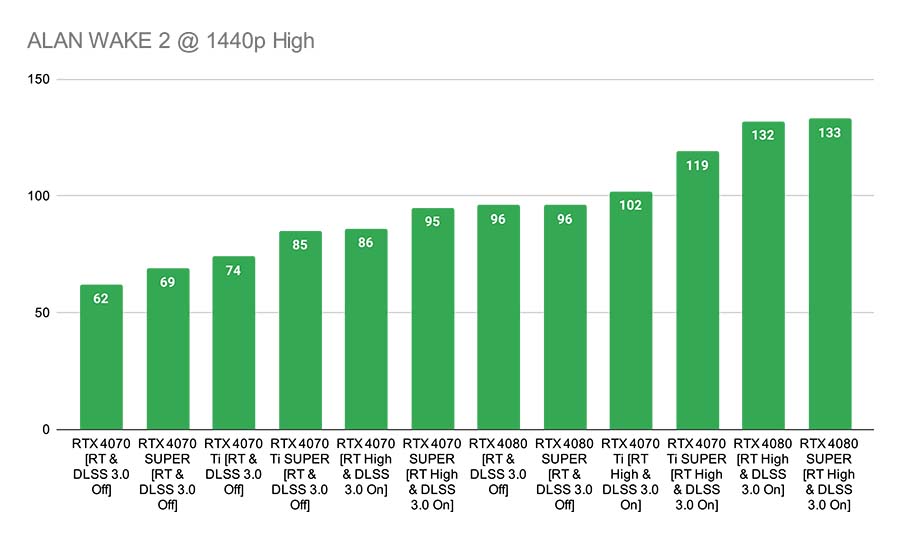
AI in Game Modding
Game modding has been a mainstay in the PC gaming space since its inception. Enthusiasts and hobbyists constantly push the boundaries of modding, offering quality-of-life improvements, new gameplay mechanics, new content, and even graphical enhancements. Tweaking and changing a game’s visual and graphical fidelity requires a significant amount of experience that goes beyond the scope of dragging and dropping a few files into your favourite game’s directory.
However, with the arrival of tools like RTX Remix, improving a game’s appearance has become much more accessible. This modding tool captures a scene within a game and lets modders create enhanced lighting effects and remastered assets that are injected back into the game at playback. Doing this provides a way of viewing real-time graphical improvements, meaning they can be easily modified on the fly.

Using RTX Remix, NVIDIA has re-released Portal, which now features fully integrated ray tracing. NVIDIA is also planning to release Half-Life 2 sometime in 2024. One of the core features of RTX Remix is a generative AI tool that uses Tensor Cores to analyse low-resolution textures and upscale them up to four times.
RTX Remix is also built on the NVIDIA Omniverse platform, streamlining workflows using the OpenUSD framework such as Blender, Autodesk, Maya, and more. This lets modders quickly jump between 3D modelling applications, further simplifying the modding process.
AI in Content Creation
As we’ve seen with DALL.E Mini and ChatGPT, creating content is now easier than ever, thanks to AI tools. Whether you need help adjusting an image in Photoshop or you’re transcribing text for a TikTok video in Davinci Resolve, AI can assist these workloads and make these processes incredibly easy.
In the past year, Adobe has integrated its AI tool ‘Firefly’ into Photoshop, Illustrator and other applications, providing a range of ways to enhance content creation. Through the generative fill tool, Adobe Firefly uses a text prompt to create a content-aware object entirely through AI. The generative expand tool acts similarly but can expand the borders of a background image to blend in with the existing canvas.
BlackMagic has also implemented various AI tools into its Davinci Resolve video editing software, which helps streamline the editing process. AI enhances a plethora of different edits, such as Speech-to-Text Transcription, Voice Isolation, Audio Classification, Magic Masking, Upscaling, and more.
We’ve found Magic Masking particularly useful, as this tool can track specific parts of a person. Once the mask has been rendered, it can be used to create secondary colour grades or effects, or you could make it stand out in an under-lit shot.
Before implementing this AI tool, video editors would have to manually track and cut out each part individually and then apply any additional effects without assistance. But the AI Magic Mask speeds this up significantly, making the process much smoother.
Final Thoughts
It is clear that Artificial Intelligence is here to stay and has positively affected the PC gaming and hardware industry by streamlining development or by improving the end-user experience through various technologies and tools. As we move into the future, more developers and manufacturers will likely shift into the AI space and offer AI-based solutions that enhance gaming and content creation for the better.
We’re seeing this already, with NVIDIA investing much of its resources into AI growth, including developing new Superchips and data centre GPUs to accelerate compute-intensive applications. Other industry titans, such as Microsoft, IBM, and Apple, are further sustaining the continued shift towards AI-powered hardware and software to win the arms race for any form of groundbreaking AI technology.


